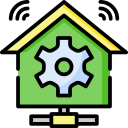The concept of the smart home has evolved dramatically over the past decade. Once limited to basic automation and remote control of devices, today’s smart homes incorporate artificial intelligence, advanced sensors, and Internet of Things (IoT) connectivity to create living spaces that are safer, more efficient, and deeply personalized. The future promises even greater advances, with emerging technologies poised to redefine the very nature of how we interact with our living spaces. This overview explores the trends, innovations, and possibilities that will shape smart homes in the years ahead.
AI-driven Personalization in Smart Homes
Context-aware Automation
Context-aware automation uses data from embedded sensors, wearable devices, and connected platforms to understand the habits and routines of inhabitants. Instead of scheduled automation, AI interprets activity patterns, preferences, and environmental changes in real time. This means heating, lighting, and security systems can adjust automatically based on who is home, the time of day, or even the mood detected in the living space. As machine learning algorithms become more sophisticated, context-aware automation will enable homes to provide comfort and convenience that adapts fluidly to evolving lifestyles.
Predictive Maintenance and Efficiency
AI-driven systems are increasingly capable of predicting when household devices or systems need maintenance or repair. By continuously analyzing usage patterns and performance data, smart homes will be able to alert residents to issues before they become problems, streamlining repairs and reducing downtime. Additionally, predictive AI can optimize energy and water consumption by anticipating demand and identifying inefficiencies. In the future, this proactive approach to upkeep and resource management will significantly lower costs and contribute to smoother, greener household operations.
Hyper-personalized Living Experiences
The next wave of smart home technology will offer hyper-personalization, tailoring every detail of the living environment to individual needs. AI will remember preferred lighting levels for different activities, adjust entertainment options based on personal tastes, and fine-tune climate settings depending on health or comfort indicators. Integration with health and fitness trackers will further enhance this experience, using data to encourage healthy habits or create restorative atmospheres for relaxation and productivity. As interfaces become more natural, hyper-personalized homes will recognize users by voice, face, or even biometric signals, creating environments that truly feel like extensions of their inhabitants.
Enhanced Security and Privacy Protections
Advanced Threat Detection
Building on the integration of AI and machine learning, future smart home security systems will be equipped to recognize a broader spectrum of threats. From detecting unusual behavior inside or around the property to identifying potential cyberattacks, these systems will apply real-time data analysis and anomaly detection to address risks instantly. With advanced sensor networks and cross-device cooperation, smart homes will become less vulnerable to conventional breaches, offering peace of mind through constant vigilance that adapts to new threats as they emerge.
Privacy-first Smart Devices
With the proliferation of connected devices, safeguarding privacy has become a significant challenge. The smart home of the future will prioritize decentralized data processing (edge computing), ensuring that sensitive information never leaves the home unless absolutely necessary. Manufacturers will develop transparent privacy controls and encrypted communication protocols, empowering residents to determine exactly what information is shared and with whom. This shift will restore trust in smart technology, allowing users to benefit from intelligent features without sacrificing personal privacy.
Biometric Access and Authentication
Physical security will move beyond traditional locks and codes, integrating advanced biometric systems for seamless, foolproof access. Facial recognition, voice identification, and even behavioral biometrics will form robust, user-friendly authentication layers. This technology not only guards against unauthorized access but also streamlines daily routines, granting entry only to recognized individuals while recording entry logs for added accountability. As biometric systems evolve, they will become immune to most spoofing methods, offering unmatched security tailored to individual users and enhancing the overall safety of the smart home environment.
Sustainable and Energy-efficient Smart Living
Intelligent Energy Management
The homes of tomorrow will feature sophisticated energy management systems capable of optimizing power consumption based on real-time demand and energy prices. AI algorithms will manage lighting, heating, appliance usage, and even the charging of electric vehicles to reduce waste and costs. Smart integration with renewable energy sources such as rooftop solar panels or home battery storage enables the efficient use of self-generated power. These advancements contribute not only to household savings but also to grid stability, helping to create a more resilient and sustainable energy future on a community scale.
Water Conservation Technologies
Future smart homes will be equipped with systems that monitor and control water usage at every access point, from kitchen faucets to garden irrigation. Leak detection, smart metering, and adaptive scheduling will minimize wastage, while integration with weather forecasts and occupancy sensors will ensure water is used only when and where it is needed. Innovations in water recycling and purification will allow homes to reuse greywater safely, dramatically reducing demand on municipal supplies. With these advancements, smart homes will play a vital role in protecting freshwater resources and supporting sustainable urban environments.
Circular Economy and Waste Reduction
Embracing a circular economy, smart homes will help residents reduce waste and reuse materials wherever possible. Connected appliances will guide optimal consumption patterns, monitor expiry dates, and automate composting or recycling processes. Advances in 3D printing may enable household objects to be manufactured on-demand from recycled or biodegradable materials, minimizing packaging and transport emissions. By making resource conservation intuitive and effortless, smart home innovations will empower individuals to contribute meaningfully to sustainability goals without compromising comfort or convenience.
